When does a house become a home? Is it after a certain number of holidays, seasons or years? Is it when you know all your neighbors? Or is it the cumulative memories of all your lived experiences that transform a building into something so much more? Whatever the point is that changes a house into your home, once it happens, it is hard to imagine your life anywhere else.
No one wants to leave their home, but as we age, the realities of living in a particular physical space get more complicated. It becomes harder to climb the stairs multiple times a day, open a particular window or unlock the front door with an arm full of groceries. Luckily, these inconveniences and barriers to accessibility can be minimized with the help of universal design; the concept of creating products and spaces that are accessible and comfortable for individuals of diverse physical ability levels.
Jake Weber from Giulietti Schouten Architects says that universal design, at its core, is “planning ahead for all scenarios,” such as the inevitability of aging. Incorporating universal design into a new construction or remodel, especially when considering the operable parts of your home such as windows and doors, allows individuals to advance in age among familiar people in a familiar place even as they become physically limited. These are seven smart strategies for preparing a home’s doors and windows to allow you or a loved one to age in place.
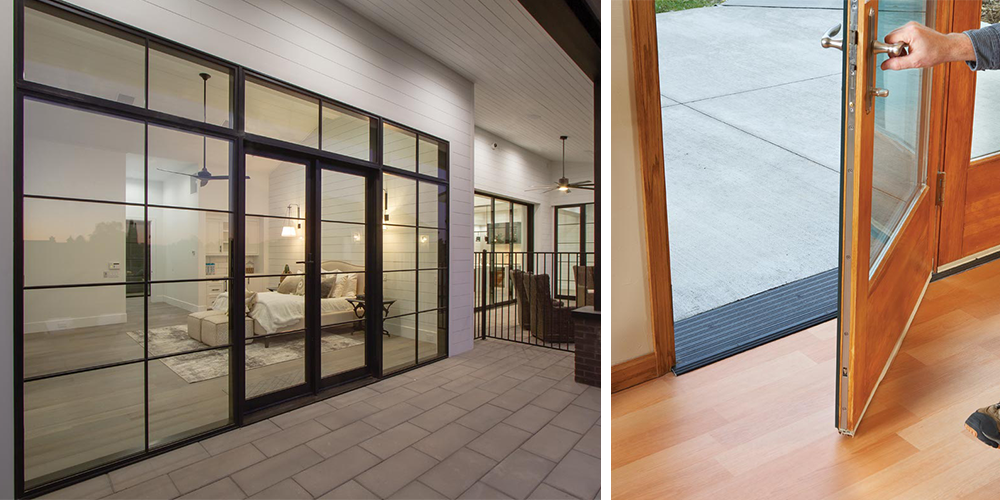
[Left Source] [Right Source]
As one ages, all entrances to your home should be accessible in the event you develop mobility issues. A 36-inch-wide door is accepted as the ideal width to allow enough space for wheelchairs, walkers, crutches and canes to pass without hindrance. Flush floor surfaces for entrances present no obstacle for walking aids and help prevent trips and falls. Specifically, thresholds complying with the Americans with Disabilities Act (ADA) for swinging doors, and aluminum sill ramps for sliding patio doors, allow smooth transitioning between your interior and exterior. Similarly, storm doors and steps are best avoided to minimize the obstacles at the entrances of your home.
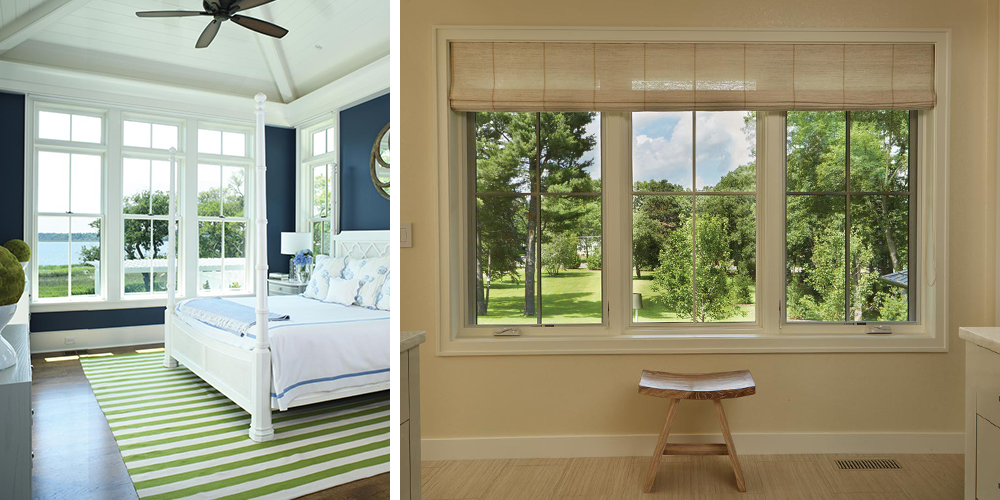
[Left Source] [Right Source]
Arthritis and loss of hand strength make it harder to twist knobs and grasp small window handles. Easily operable hardware is a must for aging in place, and an easily exchangeable facet for updating a home. Large straight levers with a short section on the end that angles toward the doorframe at 90 degrees reduce the effort needed to grasp and turn a handle for doors. Long crank handles with oversized knobs make opening double hung and casement windows easier. Locks can be outfitted with larger levers with “ears” for easy twistability.
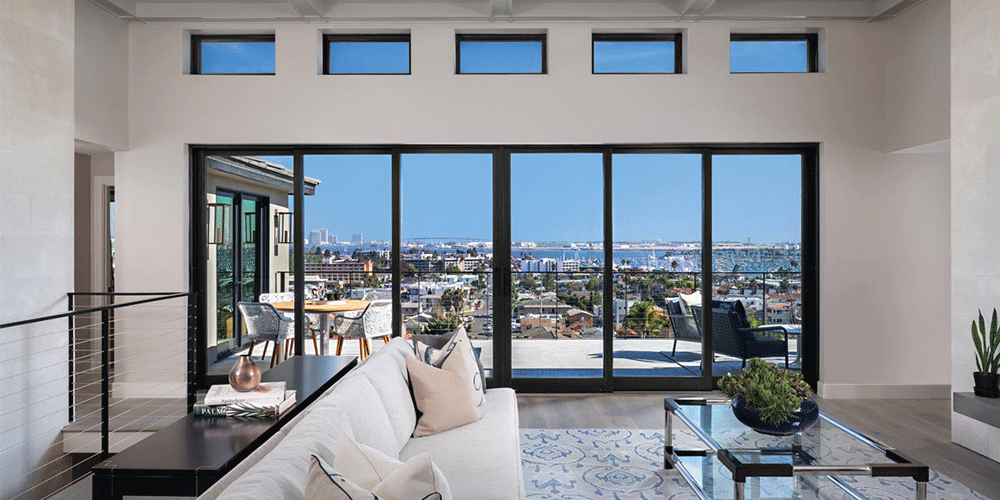
[Source]
Automation can be a valuable tool if mobility, strength and reach are compromised. Most windows and doors can be motorized so they open and close at the push of a button with little to no physical effort required. Motorized components can be particularly useful for windows in already hard to reach places. Even the most agile young adult has teetered trying to open a set-back bay unit, a transom above a door or a clerestory window near a high ceiling. Door and window automation systems can be initiated by a wall-mounted push pad, switch, touch screen, wireless remote, overhead motion sensor or application on your phone.
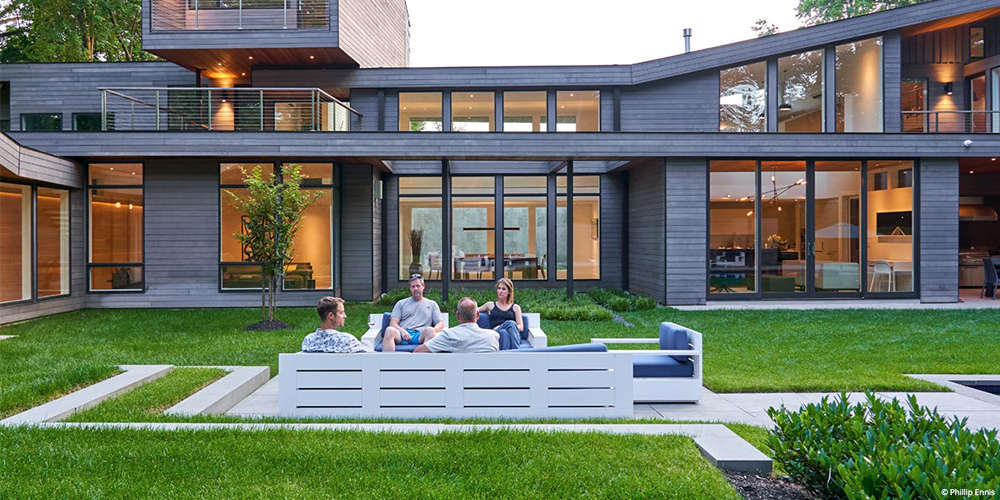
[Source]
Flexible living spaces can be a boon for those wanting to live out their golden years in their own homes. Multiuse rooms can facilitate intergenerational living and allow for adaptability in times of changed circumstances. Foldable doors can create an indoor-outdoor space to invite fresh air and sunlight even if your mobility is limited. Large doors can be automated to allow for effortless operation, opening your interior at the push of a button.
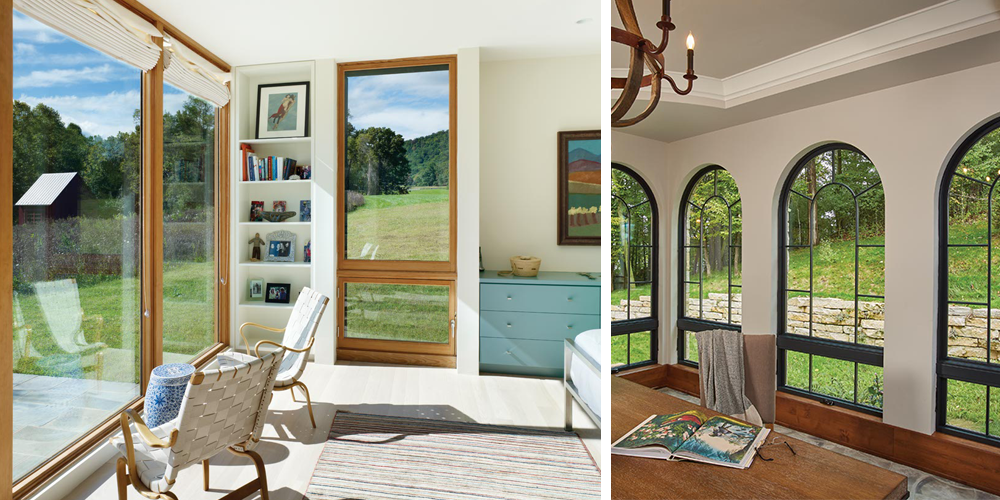
[Left Source] [Right Source]
When designing a living space for aging in place, many potential problems can be solved by appropriately placing windows, doors and their hardware. Ease and convenience of opening and closing windows and doors should be a prime consideration. Operating hardware should be located low enough on the door and windows to be operated in case raising your arm becomes difficult or you are using a wheelchair. Doors with full-height glass panels and windows with a maximum sill height of 36 inches will maintain sightlines out of and into the house.
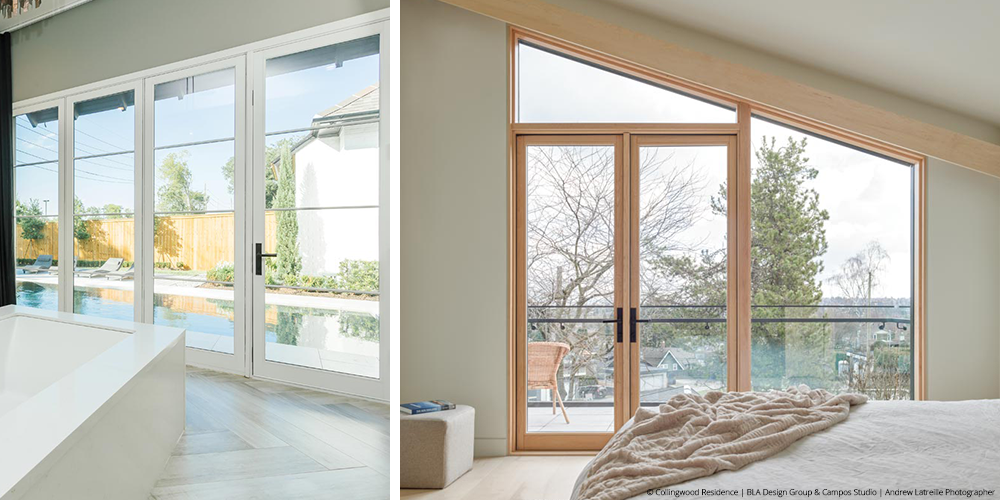
[Left Source] [Right Source]
Visual cues can be helpful if your vision is diminished. Operable hardware should be clearly visible and graspable. Hardware finishes that contrast with the windows and doors’ trim make them easier to see. Switches for automated windows, doors and lights should also contrast with the walls so they can be located easily. Using matte finishes, as opposed to glossy, can help reduce glare and shadows for optimal visual comfort and connection.
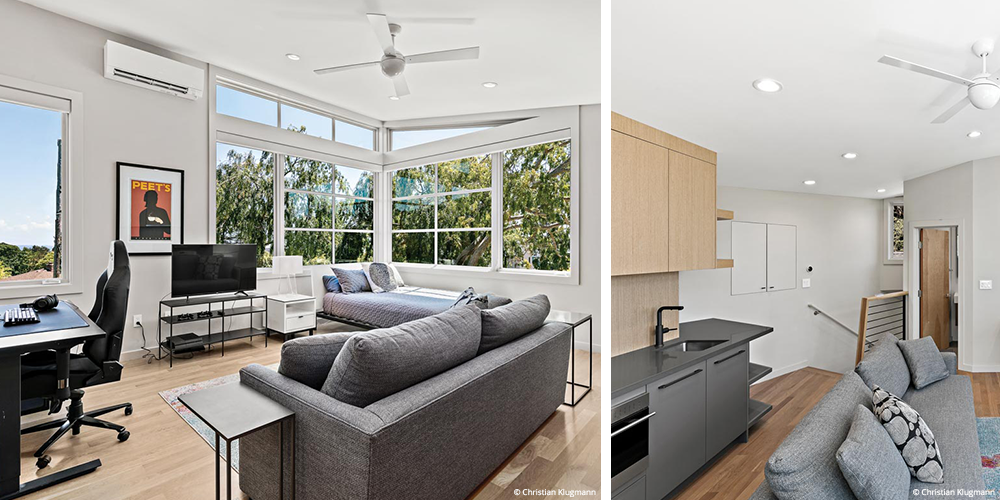
[Source]
Many of the above strategies can be employed when either remodeling a residence or building a new one. A growing trend in many communities now allows the option of building an accessory dwelling unit (ADU). These typically are either converted from existing space in your home, attached as an addition or constructed as a separate, smaller dwelling on your property.
“An ADU allows people to keep their connections to the community,” says Alan DeLaTorre, the Age-Friendly Program Manager for Portland, Oregon’s Bureau of Planning and Sustainability. An ADU can either serve as a caretaker residence or a place for an aging relative to call home, while still enjoying independent living and community.
Building a new ADU provides an opportunity to incorporate universal design from the onset. Choices that include high-quality windows and doors and accessible hardware not only will ensure easy operation, but also can add immediate and long-term value to your home.
Kolbe offers a wide variety of products that comply with universal design to allow you or a loved one to age in place at your home. Contact Kolbe today to find out how your windows and doors can be updated for the future.